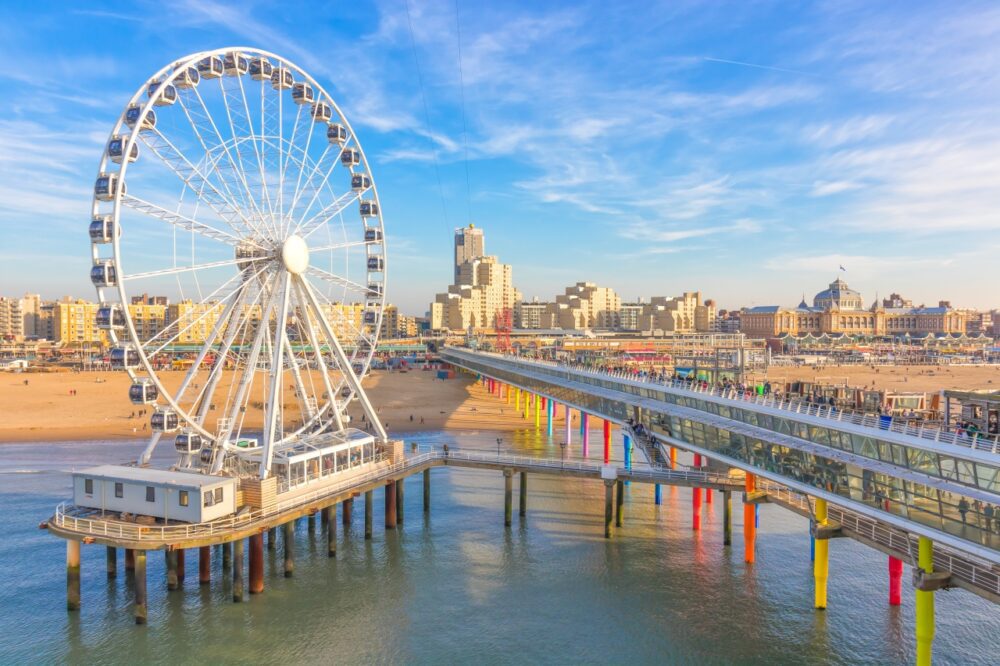
Is The Hague worth visiting? Absolutely! When I first visited The Hague, Netherlands, I was surprised by how much this elegant city has to offer. Known for its sophisticated vibe, rich history, and stunning coastal views, The Hague felt like a perfect blend of culture and relaxation. From admiring the masterpieces at the Mauritshuis to enjoying the sea breeze at Scheveningen Beach, I quickly realised this city is more than just a political hub.
Located on the North Sea coast, The Hague is the seat of the Dutch government and home to the royal family, even though it isn’t the capital. It’s a city of contrasts—grand palaces and embassies sit alongside trendy neighbourhoods and modern skyscrapers. Famous for its international institutions, like the International Court of Justice, The Hague also boasts a lively cultural scene, beautiful parks, and easy access to the beach. Whether you’re exploring the stately Binnenhof, shopping in the charming boutiques of the city centre, or relaxing at the seaside, The Hague has something for everyone.
But is The Hague worth visiting for you? In this blog post, we’ll uncover the top 10 reasons why The Hague should be on your travel list, from its world-class museums to its vibrant coastal attractions. Plus, we’ll share travel tips to help you make the most of your visit. Keep reading to see why The Hague is a destination that deserves your attention.
Table of Contents
Pros – Reasons You Should Visit The Hague
1. Political and Historical Significance
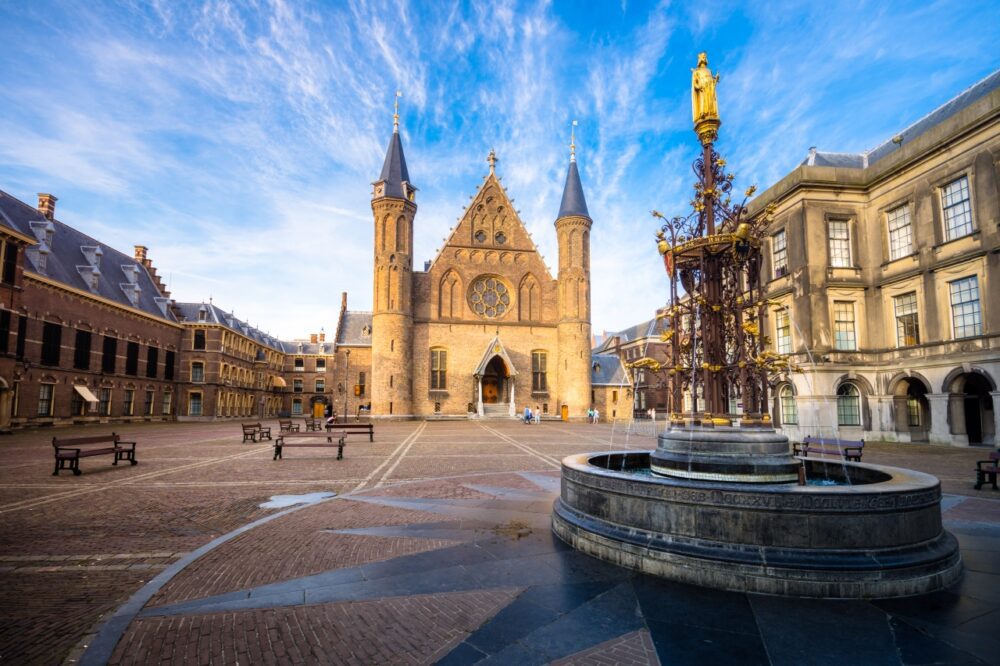
As the seat of the Dutch government, The Hague is steeped in political and historical importance. Landmarks like the Binnenhof, the Dutch parliament, and the Peace Palace make this a fascinating destination for history buffs.
I toured the Binnenhof, where centuries of Dutch political history come to life within its gothic halls and courtyards. The nearby Peace Palace, with its grand architecture and role as the home of the International Court of Justice, left me in awe of the city’s global significance. Don’t miss the visitor centre at the Peace Palace for an in-depth look at its work.
2. World-Class Art and Museums
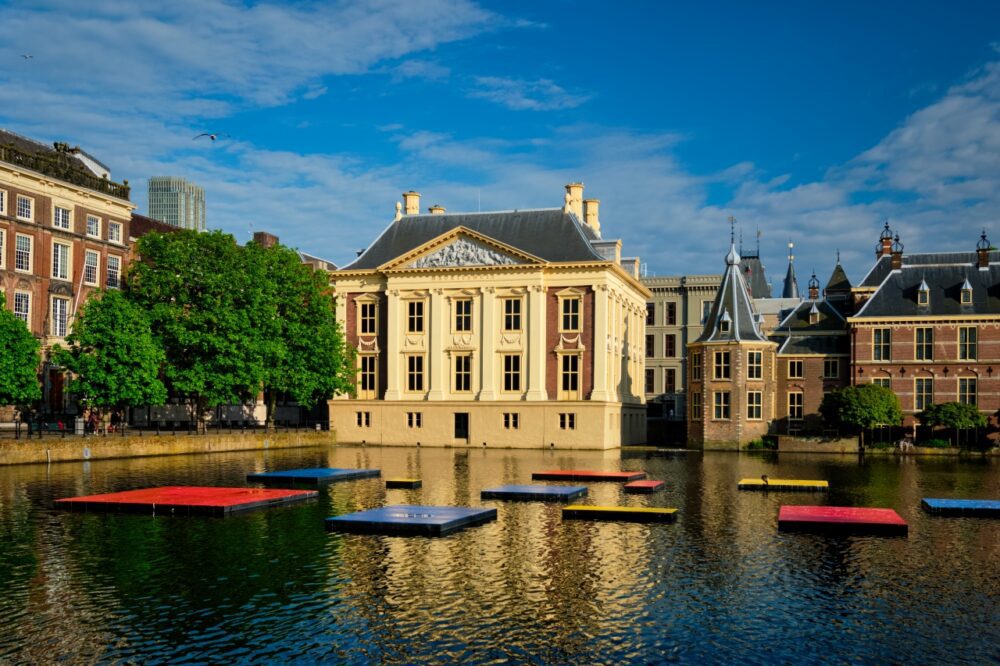
The Hague boasts an impressive array of museums, including the renowned Mauritshuis, home to Vermeer’s “Girl with a Pearl Earring.” The Escher in Het Paleis museum offers a more modern twist with its fascinating collection of optical illusions.
Standing face-to-face with Vermeer’s masterpiece in the Mauritshuis was a highlight of my visit. The museum is compact, making it easy to explore in a couple of hours. For a lighter, whimsical experience, Escher in Het Paleis is a must—kids and adults alike will be mesmerised by Escher’s impossible creations.
3. Scheveningen Beach
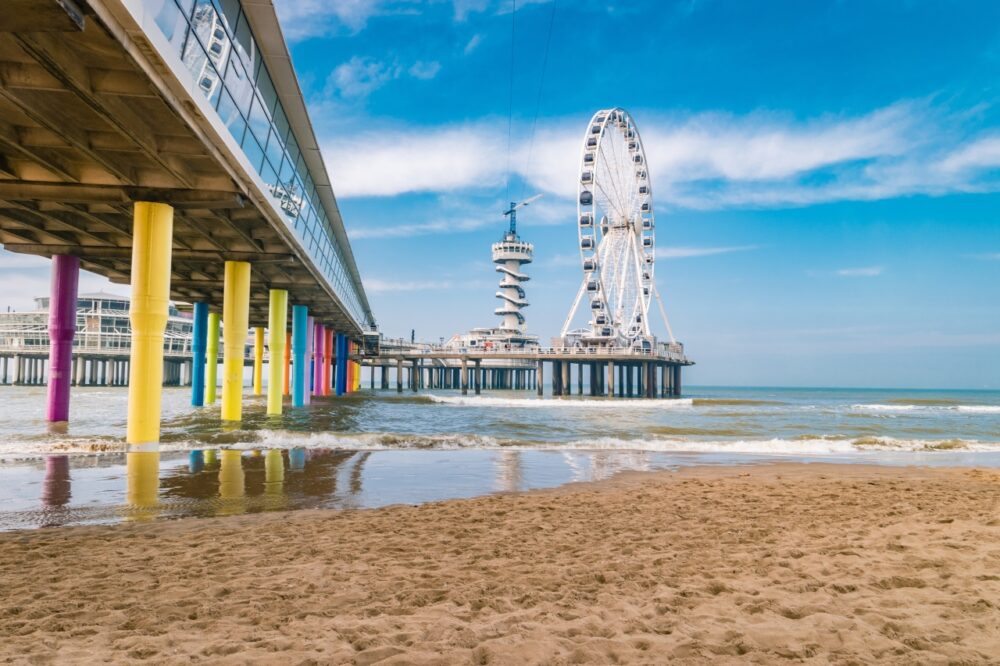
A visit to The Hague wouldn’t be complete without a trip to Scheveningen, the city’s seaside district. With its wide sandy beach, pier, and vibrant atmosphere, it’s a fantastic place to relax.
I spent an afternoon strolling along the promenade, indulging in fresh seafood at a beachside restaurant. The ferris wheel on the pier offers stunning views of the coastline, especially at sunset. Scheveningen is also great for water sports like windsurfing and kiteboarding if you’re feeling adventurous.
4. Diverse Culinary Scene
The Hague’s multicultural population is reflected in its food scene, with everything from Indonesian rijsttafel to French fine dining. The city’s cafes and markets also offer delicious local treats.
I had an incredible meal at Restaurant Garoeda, where the Indonesian flavours transported me to Bali. For something more casual, the Haagse Markt, one of Europe’s largest open-air markets, is a foodie’s paradise. Whether you’re craving stroopwafels or sambal, The Hague delivers.
5. Beautiful Parks and Green Spaces
The Hague is a green city, with parks and gardens that provide a peaceful escape from the urban buzz. Clingendael Park, with its Japanese Garden, is a particular gem.
I visited in spring when the Japanese Garden was in full bloom. The tranquil atmosphere and vibrant colours made it the perfect spot for a leisurely stroll. Westbroekpark, known for its rose garden, is another highlight, ideal for picnics or a lazy afternoon with a book.
6. International Atmosphere
As the home of numerous international organisations and embassies, The Hague has a cosmopolitan vibe. It’s a city where cultures blend seamlessly, creating a diverse and inclusive atmosphere.
I loved the mix of languages I heard while wandering through the city, from Dutch to English to Indonesian. The international community brings a global flair to The Hague, evident in its restaurants, shops, and events.
7. Compact and Walkable
Despite its political significance, The Hague feels surprisingly compact and manageable. Most major attractions are within walking or biking distance, making it easy to explore.
I found the city’s layout intuitive, with wide streets and excellent signage. Renting a bike was a breeze, and cycling to the beach or through the city centre felt safe and enjoyable. Public transport is also reliable for longer journeys.
8. Impressive Modern Architecture
While The Hague has plenty of historical charm, it also boasts striking modern architecture. The New Babylon complex and De Rotterdam are prime examples of the city’s forward-thinking design.
The juxtaposition of old and new is striking, with modern skyscrapers rising next to centuries-old buildings. This mix makes The Hague visually dynamic and appealing for architecture enthusiasts.
9. Family-Friendly Attractions
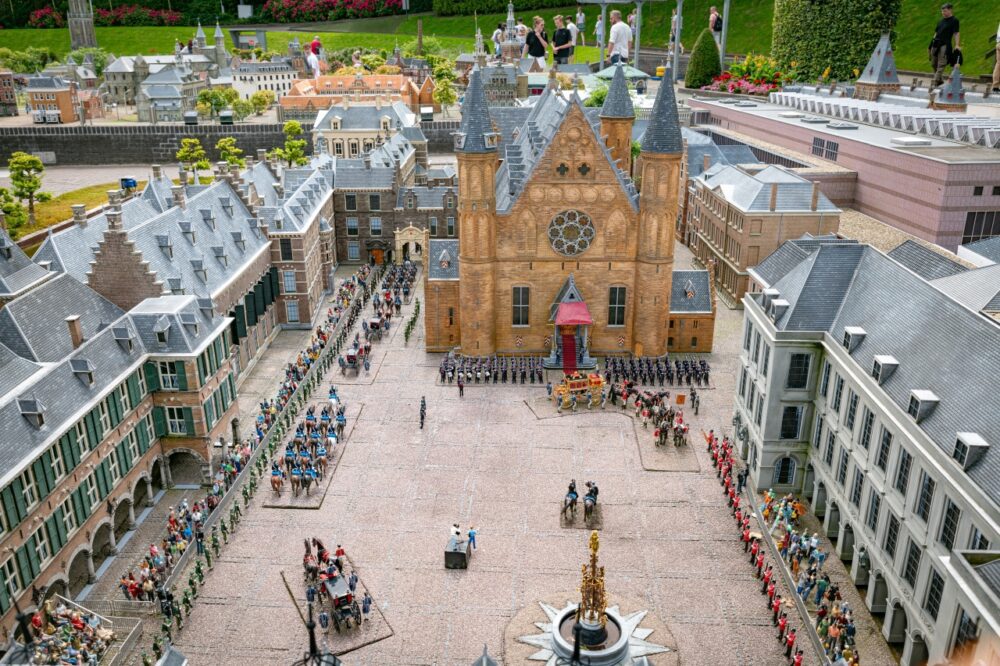
From interactive museums like the Madurodam Miniature Park to the family-friendly beach, The Hague is an excellent destination for travellers with kids.
I spent a morning at Madurodam, which offers a miniature version of the Netherlands complete with moving trains and windmills. It’s both educational and fun, making it a hit with children and adults alike.
10. Year-Round Appeal
Whether you visit in summer for the beach or winter for cosy indoor activities, The Hague offers something for every season. Its mild climate ensures you can enjoy outdoor attractions even in the cooler months.
I visited in autumn and found the city’s golden-hued parks and less-crowded attractions particularly charming. The Hague’s versatility means it’s worth considering no matter when you’re planning your trip.
Cons – Things to Consider When Visiting The Hague
1. Higher Prices
As a government and international hub, The Hague can be pricier than other Dutch cities. Accommodation and dining in central areas are often on the higher side.
I stayed in a mid-range hotel near the city centre, and while it was convenient, it was more expensive than similar options in Rotterdam or Utrecht. For budget travellers, looking for options further from the centre or in nearby towns might be a good strategy.
2. Less Vibrant Nightlife
Compared to cities like Amsterdam, The Hague’s nightlife is more subdued. While there are bars and clubs, it’s not the place for a wild night out.
I enjoyed a quiet evening at a cosy pub near the Old Town, but those seeking a buzzing party scene might be disappointed. However, the city’s laid-back vibe is perfect if you prefer relaxed evenings.
3. Weather Challenges
Like much of the Netherlands, The Hague can be rainy and windy, especially during the winter months.
I encountered a few drizzly afternoons during my visit but found that indoor attractions like museums easily filled the time. Packing a good raincoat and umbrella is essential for making the most of your trip.
4. Crowds at Popular Spots
Certain attractions, like the Mauritshuis and Scheveningen Beach, can get crowded, especially during peak seasons.
I visited the Mauritshuis on a weekend and found it packed with tourists, which made it harder to enjoy the art. Booking tickets in advance and visiting early in the day are good ways to avoid the worst of the crowds.
5. Less Iconic Than Amsterdam
While The Hague has its own charm, it doesn’t have the instantly recognisable landmarks or postcard-perfect canals that Amsterdam offers.
I appreciated The Hague for its authenticity and political significance, but it might not satisfy travellers looking for the quintessential Dutch experience. Pairing it with a trip to other cities like Delft or Leiden can offer a more rounded view of the Netherlands.
When to Visit The Hague
The best times to visit The Hague are spring (April to June) and early autumn (September to October), when the weather is mild, and the city’s parks, beaches, and cultural attractions are at their most inviting. Spring brings blooming tulips and events like the King’s Day celebrations, while summer offers vibrant festivals and warm days perfect for visiting Scheveningen Beach. Winters are quieter, but The Hague’s cosy cafes and museums provide plenty of indoor activities, and the city takes on a magical atmosphere during the holiday season.
How to Get to The Hague
The Hague is easily accessible, with Amsterdam Schiphol Airport (AMS) just 40 kilometres away. From Schiphol, direct trains run frequently to The Hague Central Station and take only 30 minutes. For short-haul flights, Rotterdam The Hague Airport (RTM), just 20 kilometres away, is another convenient option, with bus and metro connections to the city. The Hague is also well-connected by train, with services from major cities in the Netherlands and international routes like Thalys and Eurostar linking it to Brussels, Paris, and London.
Where to Stay in The Hague
The Hague offers diverse accommodation options across its charming districts:
- Luxury: City Centre – Close to attractions like the Binnenhof and Mauritshuis. Options include Hotel Des Indes, a historic five-star hotel, and Hilton The Hague, offering modern luxury in the Embassy District.
- Mid-range: Scheveningen – Perfect for beach lovers, with hotels like Carlton Beach Hotel or The Hague Marriott, combining comfort with coastal views.
- Budget: Zeeheldenkwartier – This trendy area offers affordable boutique stays and hostels like The Student Hotel The Hague, ideal for travellers looking for style on a budget.
Getting Around The Hague
The Hague is compact and well-served by its HTM public transport network, which includes trams and buses connecting the city centre to Scheveningen Beach and surrounding neighbourhoods. A day pass is an economical option for unlimited travel. Cycling is one of the best ways to explore, with bike rentals and OV-fiets bike-sharing schemes widely available. Walking is enjoyable in areas like the historic centre and Lange Voorhout. For trips further afield, The Hague’s central location makes it easy to catch a train to nearby cities like Rotterdam or Delft.
How Long to Spend in The Hague
Two to three days is perfect for experiencing The Hague’s highlights, including the Mauritshuis Museum, Binnenhof, and a day at Scheveningen Beach. This timeframe allows you to explore the Peace Palace, visit the Escher in Het Paleis Museum, and enjoy the city’s vibrant cafe culture. With an extra day, consider a trip to Madurodam, a miniature park showcasing famous Dutch landmarks, or a visit to the charming seaside town of Delft, just a short train ride away. The Hague’s blend of history, culture, and coastal beauty makes it a rewarding destination for a city break.
Conclusion
So, is The Hague worth visiting? Absolutely! With its mix of cultural highlights, stunning architecture, and proximity to the beach, The Hague offers a unique and sophisticated Dutch experience. Highlights like the Mauritshuis, the Binnenhof, and Scheveningen Beach make it a must-visit. While it’s quieter than Amsterdam, its charm, elegance, and international appeal make it just as captivating. If you’re ready to explore a refined and diverse side of the Netherlands, start planning your trip to The Hague today!
